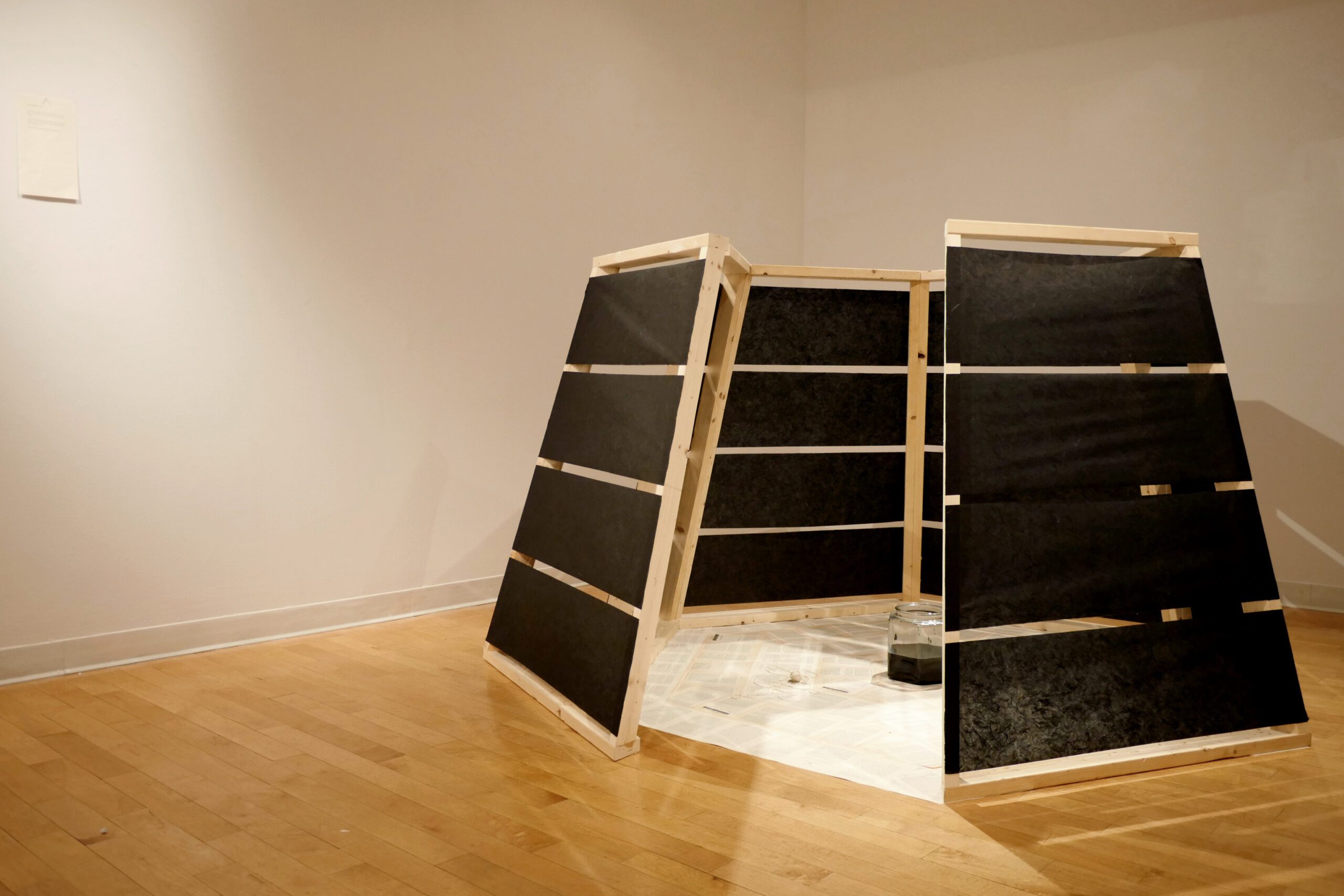
For four weeks the artist tried to teach a white stone to say the word “father.” This ritual occurred at various times most days of the month of December.
The stone is kept inside a glass jar that is filled with sumi ink. A string is attached to the stone so that whenever the ritual was performed it may be easily withdrawn from the jar.l
Throughout the month the performance I Am Teaching a Stone to Talk took place in the hexagonal cell. The walls are made from black mulberry paper. The floor is a mosaic of pages from Teilhard de Chardin’s The Divine Milieu and Annie Dillard’s Teaching a Stone to Talk. The performance was not always open to the public but the aftermath of each day was on view during normal gallery hours.


After the performance the paper on the floor was removed in order to be displayed vertically.

Detail:

The following artist statement was included as part of the exhibition:
My work is always inspired by literature. As an avid reader I often find the need to explore the author’s ideas in a less narrative and more visual manner.
This series of sculptures and durational performance space form a body of work that continues my practice of contemplating literature.
Teilhard de Chardin wrote, “Everything is God to me; everything is dust to me…” in his book The Divine Milieu. As the driving concept behind this body of work the paradoxical notions of faith and doubt collide. To the devoted theologian a rock with black honey may stand for a symbol of a god’s providence, a miracle, or perhaps a god itself. To the skeptic it is just a stone with honey in it.
The most fascinating part of this dichotomy is that both views find meaning in the stones; whether because of a transcendent interpretation or because of an aesthetic transformation.
In a similar narrative, author Annie Dillard describes a man living on an island who keeps a small stone under a piece of leather on a shelf. When he is alone he performs a ritual to teach the stone to talk. In her book Teaching A Stone to Talk she reflects upon this ritual:
“I assume that like any other meaningful effort, the ritual involves sacrifice, the suppression of self- consciousness, and a certain precise tilt of the will, so that the will becomes transparent and hollow, a channel for the work. I wish him well. It is a noble work, and beats, from any angle, selling shoes.”
Perhaps materials and items hold transcendent meaning. Perhaps they are simply things human beings can mold or shape. Either way, the actions and rituals we perform with these objects changes us and our perceptions of them. The cell is ready for me to enter and the materials are waiting.
